
Salmonflies
Pteronarcys californica
The giant Salmonflies of the Western mountains are legendary for their proclivity to elicit consistent dry-fly action and ferocious strikes.


Dolophilodes (Medium Evening Sedge) Caddisfly Larva Pictures
I think this larva best fits Dolophilodes, in which the anterior margin of the frontoclypeus is supposed to be "slightly asymmetrical." I can't confidently make out the asymmetry, but the other genera are supposed to have either greater asymmetry or a symmetrical, but convex, shape, whereas this one is clearly concave.
Based on distribution records, the species should be either aequalis, dorcus, or pallidipes, but I can't find any source to distinguish between them.
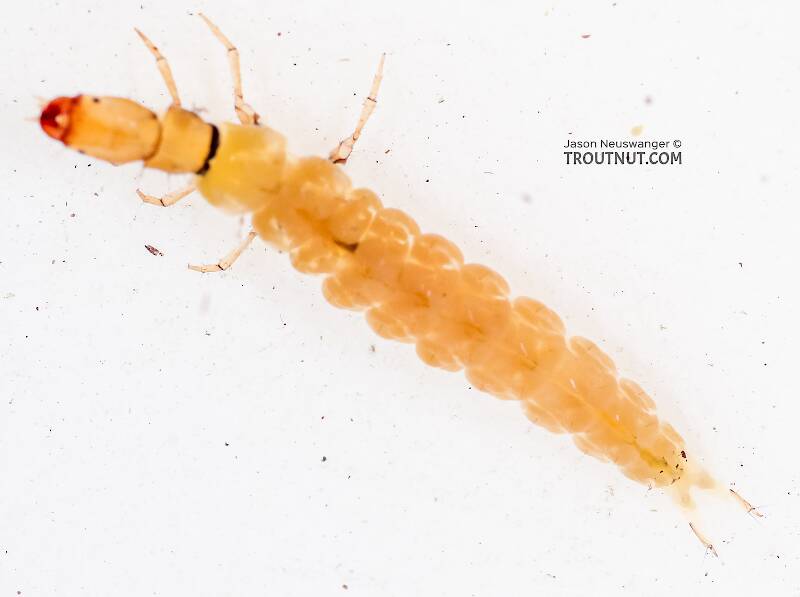
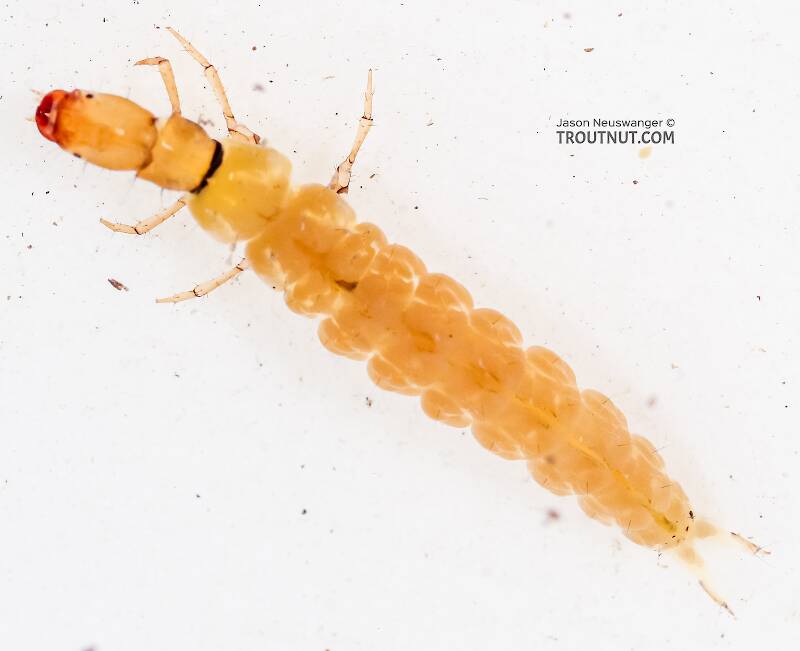
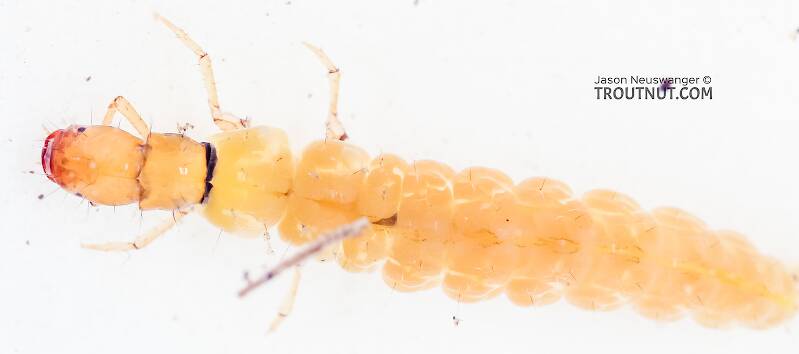
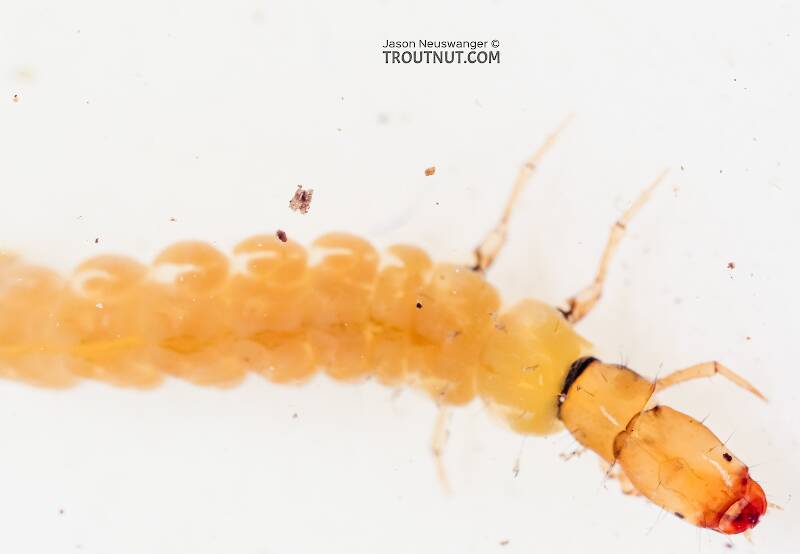
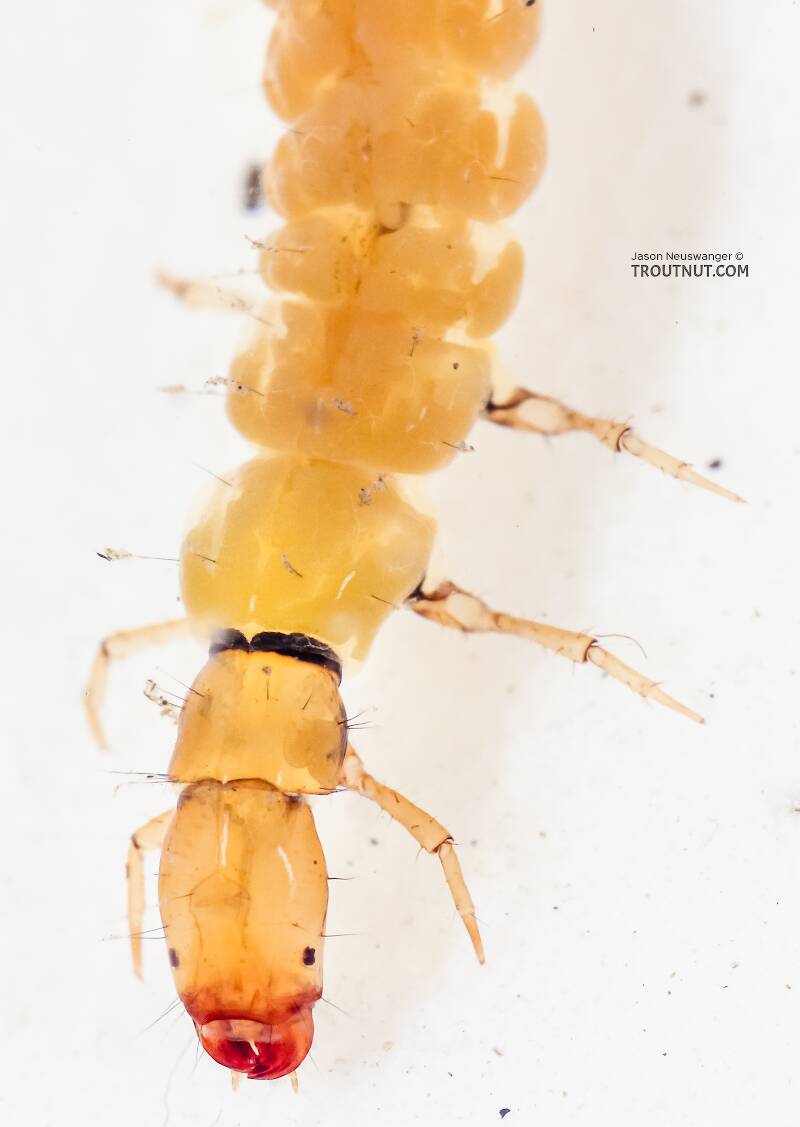

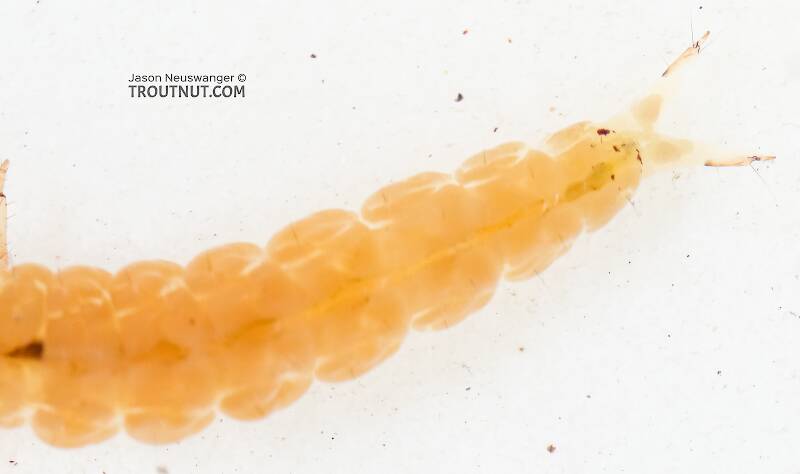

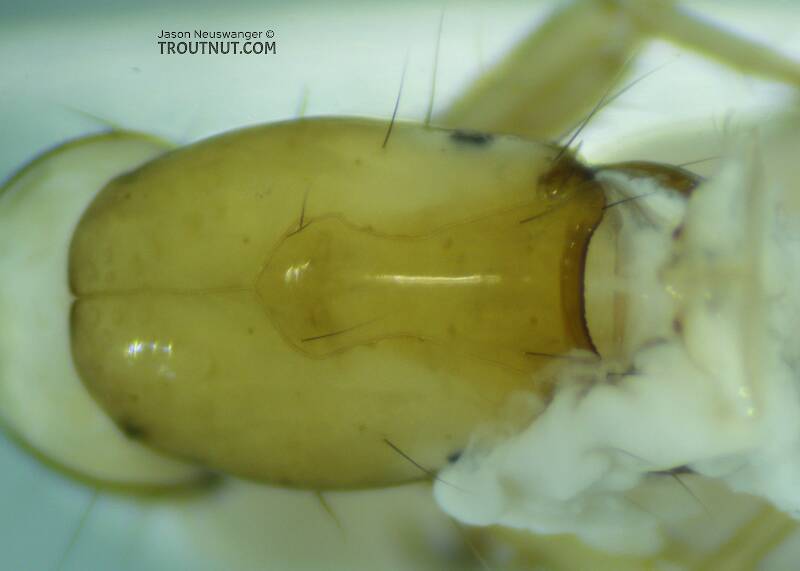
This caddisfly was collected from the East Fork Big Lost River in Idaho on August 3rd, 2020 and added to Troutnut.com by Troutnut on August 19th, 2020.
Start a Discussion of Larva
Dolophilodes (Medium Evening Sedge) Caddisfly Larva Pictures
Collection details
Date: August 3rd, 2020
Added to site: August 19th, 2020
Author: Troutnut

